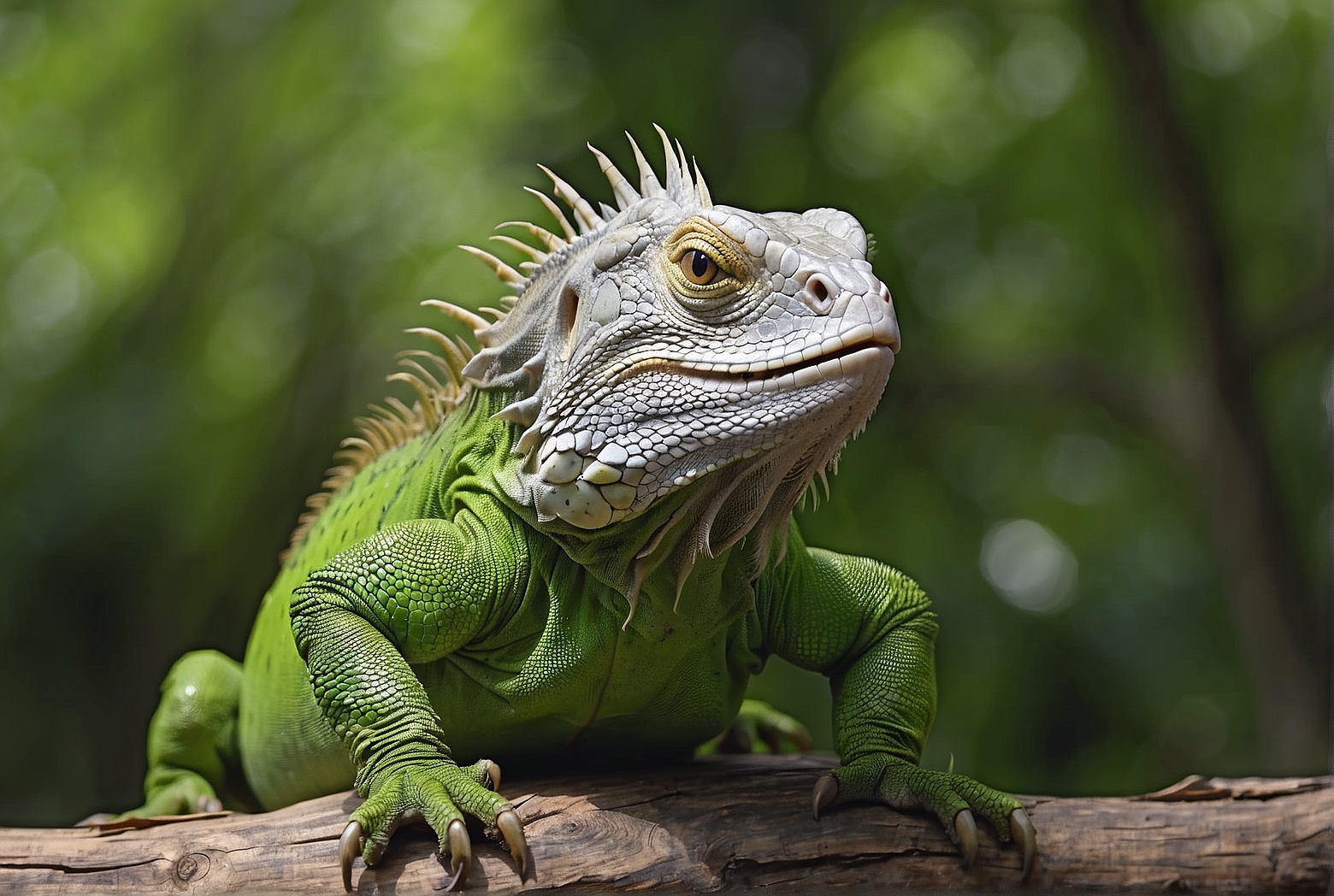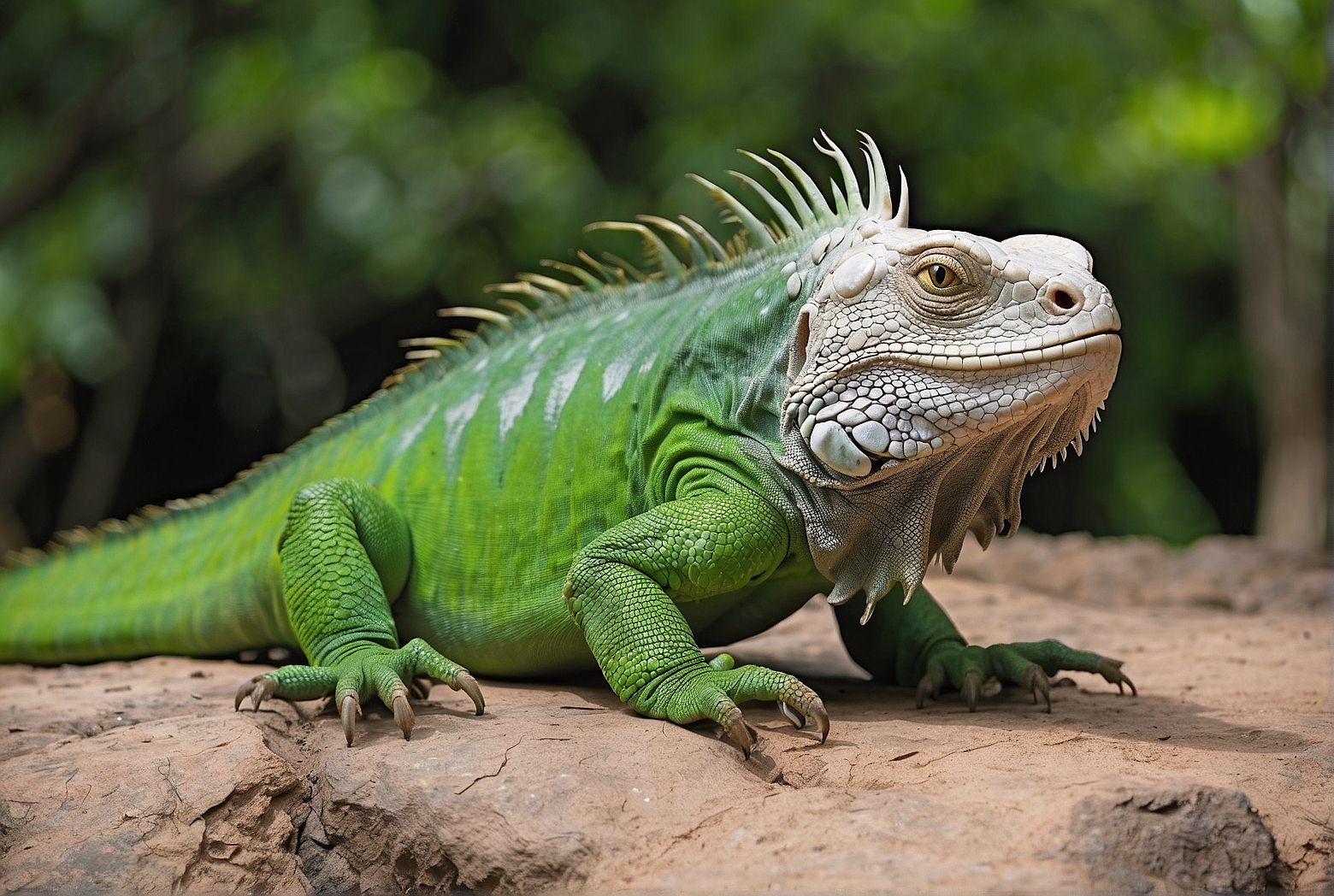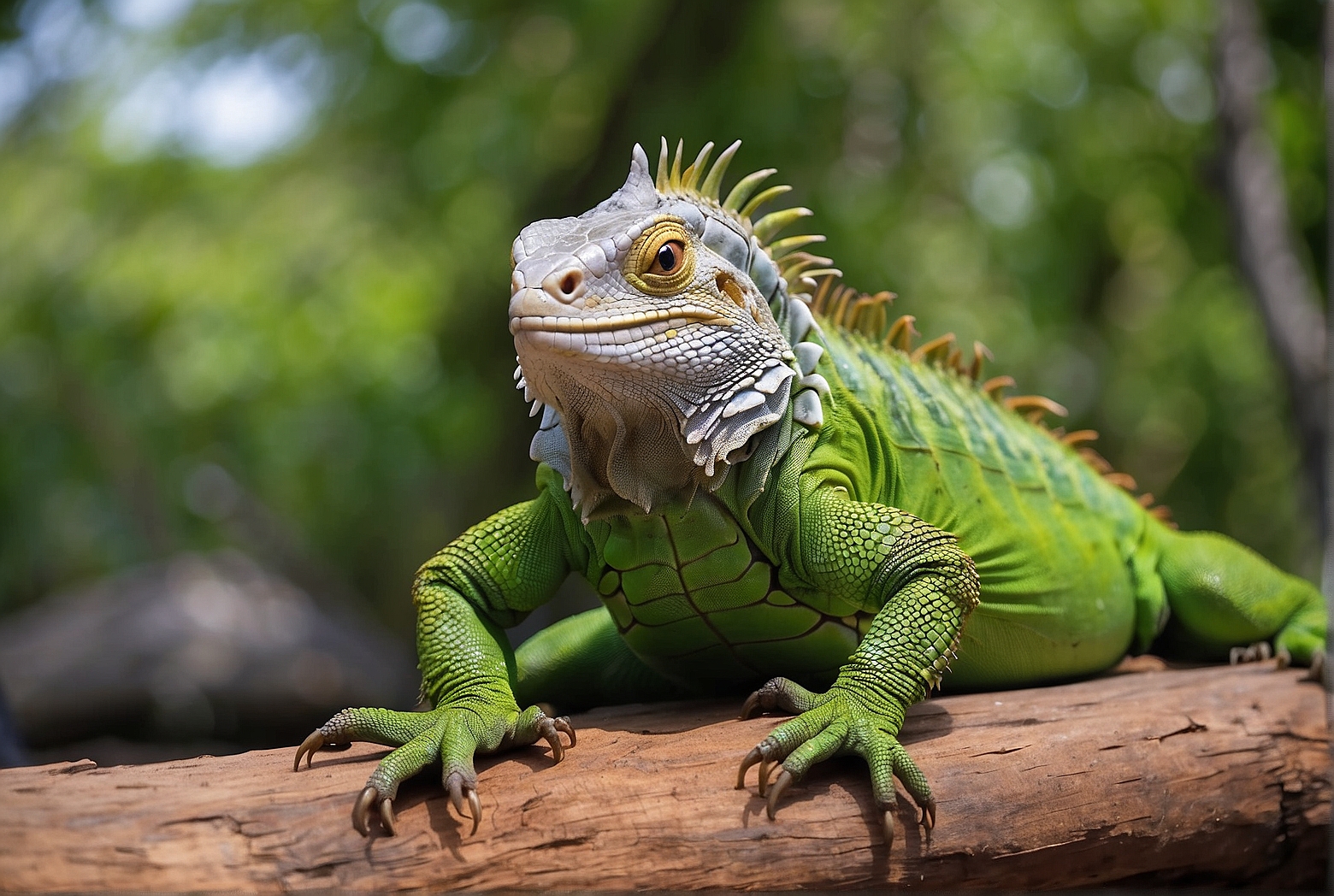Imagine a world where green iguanas, with their vibrant emerald scales and majestic presence, thrive in their natural habitats. A world where the conservation of these remarkable creatures is at the forefront of our efforts, ensuring their survival for generations to come. In the realm of wildlife preservation, the green iguana conservation project stands as a shining example of dedicated individuals working tirelessly to protect and promote the well-being of these magnificent creatures. Through this article, let us embark on a journey to explore the vital importance of promoting the conservation of green iguanas and the incredible efforts being made to safeguard their existence.
Importance of Green Iguana Conservation
Role in Ecosystem
Green iguanas play a crucial role in maintaining the balance of ecosystems in which they reside. As herbivores, they contribute to the propagation of plants by spreading seeds through their digestive system. Their feeding habits also help control plant growth, preventing overgrowth that can negatively impact other species. Additionally, these iguanas serve as prey for a variety of predators, thus maintaining a healthy food chain.
Cultural Significance
Green iguanas hold significant cultural value for many communities around the world. In some cultures, they are considered symbols of strength, wisdom, and fertility. Their presence in folklore, art, and traditional ceremonies highlights their cultural importance. By conserving green iguanas, we preserve these cultural connections and support the diverse heritage of communities worldwide.
Economic Value
Green iguanas can also contribute to local economies through various channels. Their presence in nature reserves and protected areas can attract tourists, leading to increased revenue from ecotourism. Additionally, green iguanas are often bred in captivity for the pet trade, providing employment opportunities for local communities involved in captive breeding programs. By protecting their habitats, we can ensure a sustainable source of income for these communities.
Threats to Green Iguanas
Habitat Loss
One of the biggest threats to green iguanas is habitat loss due to deforestation, urbanization, and agricultural expansion. Destruction of their natural habitats can disrupt their breeding patterns and lead to a decline in population numbers. Conservation efforts must address habitat restoration and protection to mitigate this threat.
Illegal Pet Trade
Green iguanas are highly sought after as pets, leading to illegal smuggling and trade. This unregulated activity not only puts pressure on wild populations but also often involves harmful practices, such as capturing and transporting iguanas in inhumane conditions. Strict enforcement of wildlife laws and raising awareness about the importance of purchasing from legal and ethical sources are essential in combating this issue.

Predation
Predation is another significant threat to green iguanas. Natural predators, such as birds of prey, snakes, and mammals, can impact their population numbers. Additionally, the introduction of invasive species, especially in regions where green iguanas are non-native, can pose a severe threat by preying on their eggs and competing for resources. Conservation efforts must focus on managing invasive species and educating the public about the potential dangers they pose.
Climate Change
The increasing impacts of climate change, such as rising temperatures and alteration of precipitation patterns, pose a significant threat to green iguanas. These reptiles are ectothermic and rely on external sources of heat to regulate their body temperature. As their environment changes, they may face challenges in thermoregulation and adapting to new conditions. Conservation initiatives must consider the potential effects of climate change on green iguanas and implement strategies to mitigate these impacts.
Conservation Initiatives
Protection of Critical Habitats
Preserving and protecting critical habitats for green iguanas is crucial for their long-term survival. Efforts should focus on establishing and expanding protected areas, ensuring they have adequate resources and suitable conditions to support healthy populations. Restoration projects can also be implemented to rehabilitate degraded habitats and create corridors for genetic exchange between populations.
Enforcement of Wildlife Laws
Strict enforcement of wildlife laws is essential to combat the illegal pet trade and protect green iguanas from exploitation. Governments and law enforcement agencies should work together to identify and prosecute those involved in the smuggling and sale of these endangered species. Effective penalties and deterrents should be in place to discourage illegal activities.
Promotion of Sustainable Tourism
The conservation of green iguanas can be supported through the promotion of sustainable tourism practices. By engaging tourists in responsible wildlife viewing and educating them about the importance of conservation, we can encourage a greater appreciation for these creatures and their habitats. Sustainable tourism initiatives can provide economic incentives for local communities to protect green iguanas and their habitats.
Community Engagement
Active community involvement plays a key role in green iguana conservation efforts. Local communities living near green iguana habitats can act as stewards of the environment and contribute to monitoring and reporting activities. Engaging communities through education, capacity-building programs, and creating alternative livelihood opportunities can foster a sense of ownership and support for conservation initiatives.

Research and Monitoring
Studying Population Dynamics
Understanding the dynamics of green iguana populations is critical for effective conservation. Population studies help assess population size, reproductive success, and survival rates. This information aids in identifying potential threats, implementing targeted conservation strategies, and monitoring the progress of conservation efforts over time.
Tracking Movements and Migrations
Tracking the movements and migrations of green iguanas can provide valuable insights into their habitat requirements, identify important feeding and breeding grounds, and better understand their dispersal patterns. This knowledge can inform habitat management plans and aid in the protection of critical areas along their migration routes.
Assessing Health and Disease
Monitoring the health and disease status of green iguanas is essential for their conservation and management. Assessing population health can identify potential threats, such as the spread of infectious diseases, and help implement measures to prevent outbreaks. Monitoring programs can also provide early detection of diseases and enable prompt intervention to mitigate their impacts.
Monitoring Climate Impacts
Climate monitoring initiatives can provide valuable data on the impacts of climate change on green iguanas. By tracking temperature trends, rainfall patterns, and other climate variables, scientists can assess how these changes may affect iguana populations and habitats. This information guides conservation actions, such as implementing adaptive management strategies and enhancing habitat resilience.
Educational Programs
School Outreach Programs
Engaging students in green iguana conservation through school outreach programs can foster a sense of environmental stewardship from an early age. These programs can include interactive activities, educational materials, and field trips to green iguana habitats. By raising awareness and knowledge about the importance of conservation, we can inspire young minds to become active conservationists.
Workshops and Lectures
Organizing workshops and giving lectures about green iguana conservation can reach a broader audience and promote greater understanding of the species and their ecological significance. Experts can share their knowledge, present research findings, and discuss conservation challenges and strategies. These events encourage dialogue, collaboration, and inspire individuals to get involved in conservation efforts.
Public Awareness Campaigns
Public awareness campaigns play a vital role in rallying support and fostering a sense of responsibility towards green iguana conservation. These campaigns can utilize various media channels, such as television, radio, social media, and print materials, to disseminate information about the threats facing green iguanas and the actions individuals can take to help protect them.
Online Resources
Creating online resources, such as websites and educational materials, can provide accessible and up-to-date information on green iguana conservation. These resources can include species profiles, conservation tips, news updates, research publications, and opportunities for individuals to get involved in conservation efforts. Online platforms facilitate learning, outreach, and collaboration among conservation enthusiasts worldwide.
Conservation Partnerships
Collaboration with Local Communities
Building strong partnerships with local communities is crucial for the success of green iguana conservation initiatives. By involving communities in decision-making processes, integrating traditional knowledge, and respecting cultural values, trust and cooperation can be fostered. Collaboration can lead to increased support, active participation, and the development of sustainable conservation practices.
Partnerships with Government Agencies
Collaboration with government agencies is essential for the enforcement of wildlife laws, protection of critical habitats, and the implementation of conservation policies. Governments can provide resources, funding, and legislation to support green iguana conservation initiatives. Partnerships with agencies responsible for environmental protection ensure coordinated efforts and efficient use of available resources.
Cooperation with Research Institutions
Research institutions play a crucial role in advancing our knowledge of green iguanas and developing effective conservation strategies. Collaboration with these institutions allows for scientific research, data collection, and analysis that can guide conservation decision-making. By working together, conservation organizations and research institutions can contribute to each other’s goals and objectives.
Engagement with Conservation Organizations
Engaging with existing conservation organizations dedicated to the protection of reptiles and their habitats can provide valuable support and resources for green iguana conservation. These organizations often have networks, expertise, and established conservation programs that can complement and enhance efforts to conserve green iguanas.
Reintroduction Programs
Breeding and Hatching Programs
Breeding and hatching programs are crucial for replenishing green iguana populations and ensuring their genetic diversity. Captive breeding facilities can provide a controlled environment for successful mating and egg incubation. These programs play a vital role in reintroducing captive-bred individuals to the wild, thus supplementing natural populations.
Soft Release Techniques
Soft release techniques involve gradually acclimating captive-bred green iguanas to their natural habitat before their full release. This process allows the iguanas to adapt to their surroundings, learn necessary survival skills, and establish territories. Soft release techniques increase the chances of successful reintroduction and promote the long-term survival of released individuals.
Monitoring and Post-Release Checks
After reintroducing green iguanas into the wild, ongoing monitoring is essential to assess their adaptation, survival, and breeding success. Regular monitoring helps identify any potential threats, evaluate the effectiveness of reintroduction programs, and make necessary adjustments. Post-release checks can provide important data on the overall success of the program.
Evaluation of Program Success
Evaluating the success of reintroduction programs is crucial for measuring their effectiveness and determining areas for improvement. Monitoring key indicators, such as population growth, survival rates, and genetic diversity, allows conservationists to assess the program’s outcomes. This feedback ensures that future reintroduction efforts can build upon lessons learned and contribute to species recovery.
Conservation Funding
Grants and Donations
Securing grants and donations from organizations, government agencies, and individuals is essential for funding green iguana conservation projects. Conservation initiatives rely heavily on external funding to support research, monitoring, habitat protections, education programs, and other activities. Grants and donations provide the necessary resources to implement holistic conservation strategies.
Corporate Sponsorships
Corporate sponsorships offer an opportunity for businesses to demonstrate their corporate social responsibility and support green iguana conservation. Partnerships with corporations can provide essential financial support, resources, and industry expertise. Public-private collaborations help raise awareness about green iguanas and engage a broader audience.
Fundraising Events
Organizing fundraising events is a popular way to generate funds for green iguana conservation projects. Events such as charity galas, auctions, marathons, or community gatherings can help mobilize support and create a sense of community involvement. Funds raised from these events can be allocated directly to conservation efforts.
Crowdfunding Campaigns
Crowdfunding campaigns provide a platform for individuals and organizations to raise funds from a wide audience. By sharing the conservation goals and highlighting the importance of green iguana conservation, crowdfunding campaigns can attract donations from concerned individuals worldwide. These campaigns allow for grassroots support and can raise significant funds for conservation initiatives.
Government Policies and Regulations
Protected Species Status
Granting green iguanas protected species status through legislation ensures legal protection against hunting, trade, and habitat destruction. Protected status fosters conservation efforts, facilitates enforcement of wildlife laws, and promotes responsible management of green iguana populations. Governments should work closely with conservation organizations to establish and enforce appropriate protection measures.
Licensing and Permits
Licensing and permits can regulate the acquisition, sale, and ownership of green iguanas. These measures ensure that individuals involved in captive breeding, research, and commercial trade adhere to standards of ethical and sustainable practices. Licensing and permitting systems can also help prevent illegal activities and protect wild populations.
Trade Restrictions
Implementing trade restrictions is crucial to combat the illegal pet trade and regulate the international movement of green iguanas. International agreements, such as the Convention on International Trade in Endangered Species of Wild Fauna and Flora (CITES), provide mechanisms for controlling and monitoring the trade of endangered species. Cooperation between countries is necessary to enforce trade restrictions effectively.
Penalties for Illegal Activities
Establishing significant penalties for engaging in illegal activities involving green iguanas discourages smuggling, poaching, and habitat destruction. Strict enforcement of penalties acts as a deterrent and reduces the profitability of the illegal pet trade. The severity of penalties should reflect the gravity of the offense and provide an effective means of deterring potential violators.
Future Challenges and Opportunities
Climate Change Impacts
Climate change presents a significant challenge for green iguana conservation. Rising temperatures, changing rainfall patterns, and extreme weather events can directly impact their habitats, breeding cycles, and food availability. Conservation efforts must adapt to these changing conditions, incorporating climate resilience strategies and promoting habitat restoration to mitigate the effects of climate change.
Sustainable Development
Balancing the needs of human development with green iguana conservation is crucial for long-term success. Sustainable development practices can minimize the negative impacts on green iguana habitats and ensure the coexistence of local communities and wildlife. By promoting sustainable land use, responsible tourism, and resource management, we can create a harmonious relationship between humans and green iguanas.
Scientific Advancements
Advancements in scientific research provide opportunities to deepen our understanding of green iguanas and develop innovative conservation strategies. Technologies such as satellite tracking, genetic analysis, and non-invasive monitoring methods enhance our ability to study and protect these elusive reptiles. Continued investment in scientific research can unlock new knowledge and solutions for green iguana conservation.
International Collaboration
International collaboration is essential for the conservation of green iguanas. Cross-border cooperation allows for the sharing of knowledge, resources, and best practices. Joint conservation efforts can address shared threats and ensure the sustainable management of green iguana populations across their range. Through collaboration, we can effectively protect these captivating creatures for generations to come.
In conclusion, the conservation of green iguanas is of utmost importance due to their vital role in ecosystems, cultural significance, and economic value. Despite facing threats such as habitat loss, the illegal pet trade, predation, and climate change, conservation initiatives can mitigate these challenges. By focusing on habitat protection, enforcing wildlife laws, promoting sustainable tourism, and engaging communities, we can work towards a brighter future for green iguanas. Research, monitoring, educational programs, and reintroduction initiatives are essential components of successful conservation. Collaboration with local communities, government agencies, research institutions, and conservation organizations is crucial for a holistic approach. Funding, government policies, and regulations play a pivotal role in supporting conservation efforts. Although future challenges such as climate change and sustainable development loom, scientific advancements and international collaboration offer opportunities for innovative solutions. With collective efforts and dedication, we can ensure the continued existence and thriving populations of green iguanas.
